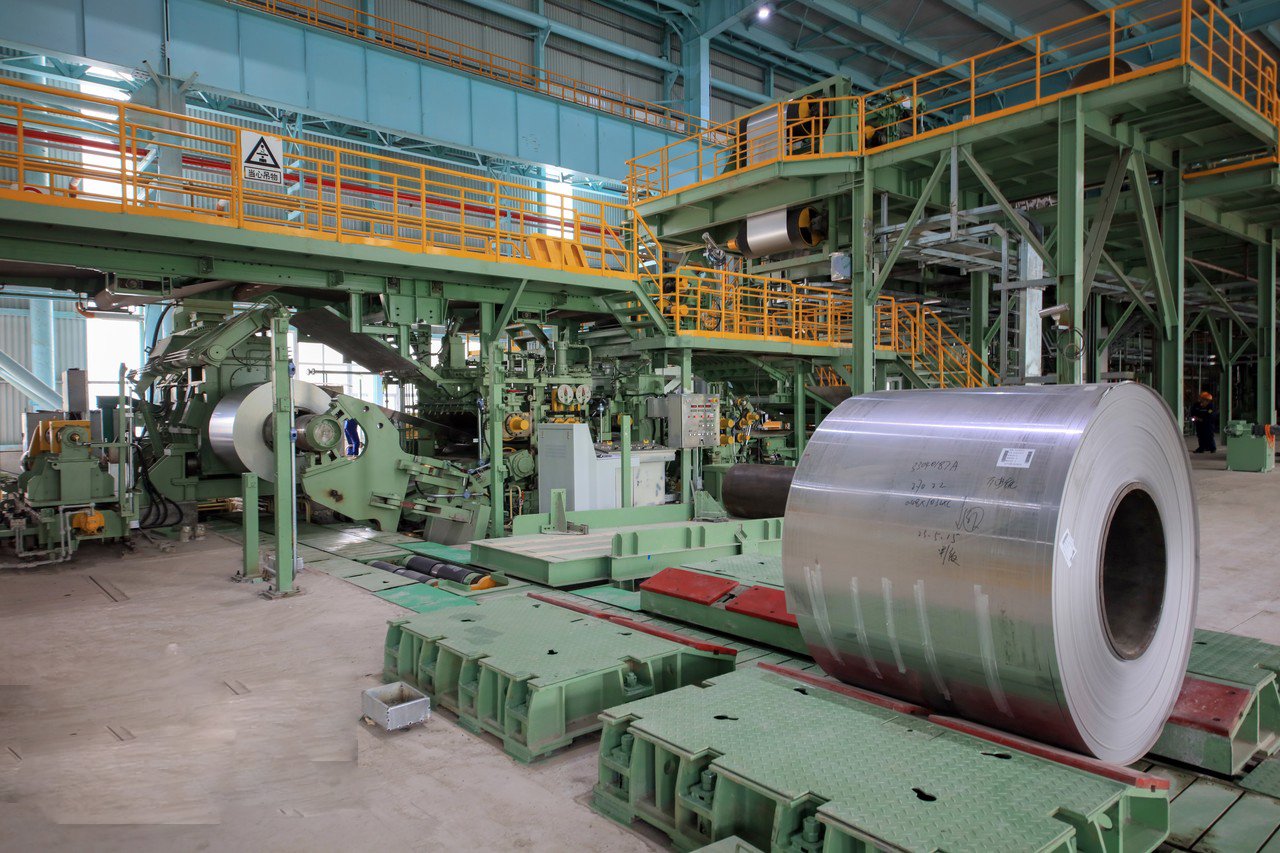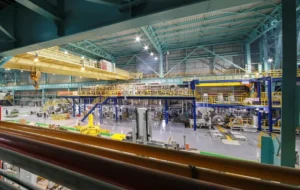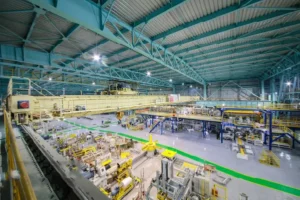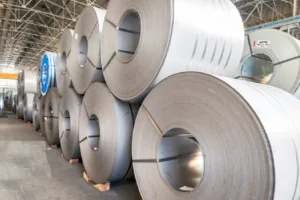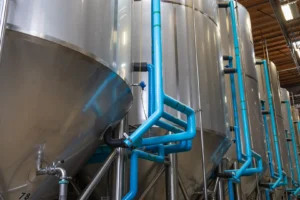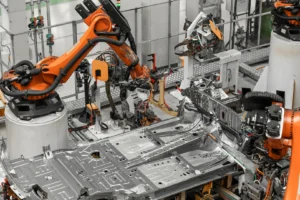Passivation for Stainless Steel: Process & Standards
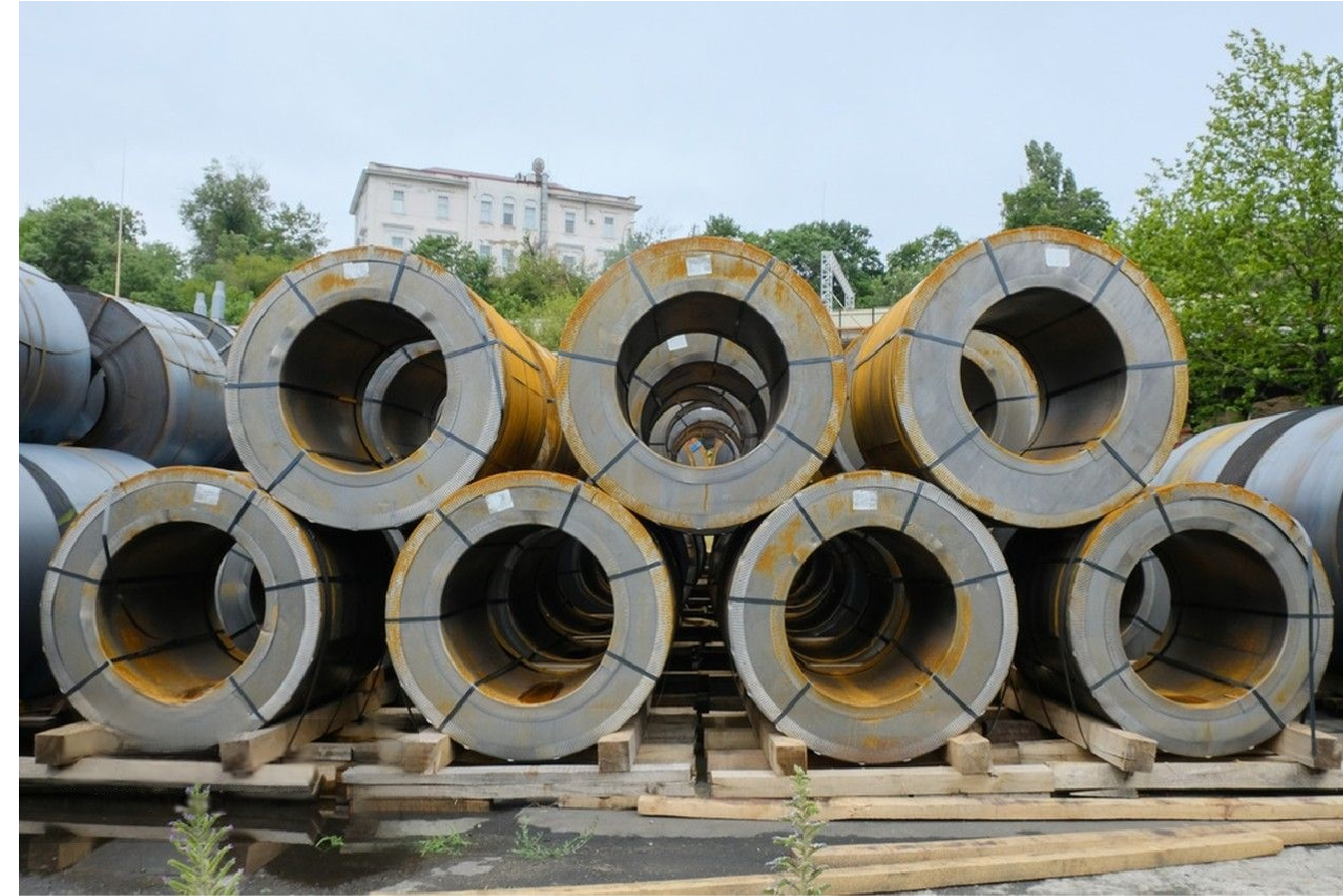
Are you finding that your stainless steel components aren't living up to their "stainless" reputation, showing unexpected signs of rust or corrosion? This common frustration can lead to premature failures, costly replacements, and a tarnished brand image. The good news is that proper passivation significantly enhances stainless steel's natural corrosion resistance, ensuring longevity and performance.
Passivation is a crucial post-fabrication chemical treatment for stainless steel that removes free iron and other exogenous contaminants from the surface. This process enhances the spontaneous formation of a passive, protective chromium-oxide layer, significantly improving the material's corrosion resistance and ensuring its intended lifespan.
Understanding the intricacies of passivation is more than just an academic exercise; it's a vital step in safeguarding your investments and ensuring the reliability of your stainless steel applications. As Global Business Director at MFY, I've seen firsthand how a well-executed passivation process can make all the difference. This guide will walk you through the essential steps and standards.
Passivation is often misunderstood as merely a cleaning process, but it's far more sophisticated and critical, especially in demanding industries. It's a chemical treatment that fundamentally alters the surface chemistry of stainless steel to maximize its inherent corrosion resistance. For instance, in the food and beverage industry, one of MFY's key client sectors, improperly passivated stainless steel can lead to contamination and compromise hygiene standards. Similarly, for engineering and construction contractors relying on stainless steel for structural integrity in harsh environments, such as those found in many of our export markets like the Middle East or coastal regions of Southeast Asia, the absence of effective passivation can result in catastrophic failures. Research from organizations like NACE International (now AMPP) consistently highlights that corrosion costs industries billions annually1; effective passivation is a direct, cost-efficient countermeasure. It’s not just about preventing rust; it’s about ensuring safety, compliance, and long-term asset value. At MFY, we supply high-quality stainless steel coils, sheets, and pipes, and we always emphasize to our clients the importance of correct downstream processing, including passivation, to unlock the material's full potential.
Step 1: Understand the purpose and benefits of passivation for stainless steel.
Many in the industry either misunderstand the core purpose of passivation or, worse, skip it entirely, often due to perceived cost or time savings. This oversight frequently leads to premature material degradation, unexpected operational failures, and escalating maintenance or replacement costs. By clearly grasping why passivation is essential, you can proactively protect your stainless steel assets, ensuring they deliver optimal performance and longevity, ultimately saving significant resources.
Passivation for stainless steel is a chemical process designed to remove free iron and other surface contaminants, thereby promoting the formation of a robust, uniform chromium-oxide passive layer. Key benefits include significantly enhanced corrosion resistance, improved surface hygiene, and an extended service life for stainless steel components.
Now that we've established why passivation is a non-negotiable step for achieving optimal performance from stainless steel, it's crucial to delve into the fundamental science behind this transformative process. It’s not just a superficial cleaning; passivation triggers a chemical enhancement of the steel's natural protective layer. This understanding forms the bedrock upon which all subsequent steps in the passivation procedure are built. For many of our clients at MFY, ranging from large-scale manufacturing companies to specialized equipment integrators, grasping this core concept has been pivotal in improving their product quality and durability. For example, a manufacturing client in India, one of our key export markets, initially struggled with surface rust on their stainless steel components despite using high-grade material. Once they understood that fabrication processes inevitably introduce contaminants that disrupt the passive layer, and that passivation chemically restores and strengthens this layer, their quality control improved dramatically. This knowledge empowers users to appreciate why adherence to specific passivation parameters2, which we'll discuss later, is so critical, rather than viewing them as mere procedural guidelines. It transforms the approach from a task to be completed into a strategic step for value preservation and enhancement of their stainless steel products, whether they are stainless steel coils awaiting further processing or finished stainless steel pipes destined for demanding applications.
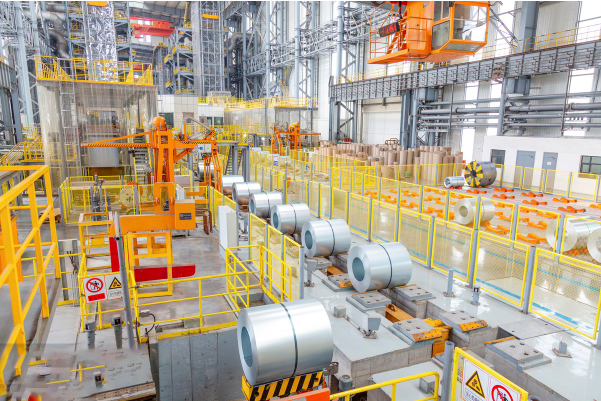
The real magic of passivation lies in its ability to enhance what stainless steel naturally does best: protect itself. This isn't about adding a coating; it's about optimizing the steel's inherent surface chemistry. The process is critical for any stainless steel part that has undergone fabrication steps like machining, welding, forming, or even just handling, as these can all compromise the original passive layer. As someone deeply involved in the stainless steel supply chain at MFY, I’ve seen countless instances where understanding this fundamental purpose has been the key to unlocking superior product performance for our clients, whether they are manufacturing companies, engineering contractors, or distributors.
The Science Behind Enhanced Corrosion Resistance
Stainless steel's renowned corrosion resistance stems from a very thin, invisible, yet remarkably tenacious passive layer, primarily composed of chromium oxide (Cr₂O₃). This layer forms spontaneously when chromium, a key alloying element in stainless steel (typically present at 10.5% or more), is exposed to oxygen in the atmosphere or other oxidizing environments. It acts as a barrier, preventing the underlying iron from reacting with oxygen and moisture, which would otherwise lead to rust and corrosion. This self-healing film is what gives stainless steel its "stainless" quality.
However, during fabrication processes such as machining, cutting, grinding, or welding, this natural protective layer can be damaged, thinned, or contaminated. Microscopic particles of free iron from cutting tools, embedded grit from abrasive processes, or even iron-rich dust settling on the surface can disrupt the uniformity and integrity of the chromium oxide layer. These free iron particles are particularly problematic because they can become initiation sites for corrosion, essentially acting like tiny rust magnets on a surface that should be resistant. If left untreated, these sites can lead to localized corrosion, such as pitting or crevice corrosion, significantly reducing the component's lifespan.
Passivation is a chemical treatment specifically designed to address these issues. It typically involves immersing the stainless steel component in an oxidizing acid solution, most commonly nitric acid or citric acid. This solution performs two critical functions: firstly, it dissolves any free iron and other metallic contaminants from the surface. Secondly, and equally importantly, it provides a highly oxidizing environment that facilitates and accelerates the re-formation of a thicker, more uniform, and chemically pure chromium oxide passive layer. This enhanced layer is far more effective at protecting the underlying steel from corrosive environments than the naturally formed film that might be compromised by fabrication. At MFY, when we supply stainless steel coils or sheets to manufacturers, we often discuss their downstream processes, and if significant fabrication is involved, we highlight how crucial passivation will be to restore and optimize the corrosion resistance of the final product. For instance, a client manufacturing food processing equipment from our 304-grade stainless steel sheets found that meticulous passivation post-welding and polishing eliminated micro-rust issues they had previously encountered, ensuring compliance with stringent hygiene standards.
Key Benefits Beyond Corrosion Prevention
While enhanced corrosion resistance is the primary and most celebrated benefit of passivation, the process offers several other significant advantages that contribute to the overall quality, longevity, and functionality of stainless steel components. These benefits are particularly pertinent to the diverse range of clients MFY serves, from equipment integrators to construction contractors.
One major benefit is the thorough removal of surface contaminants introduced during manufacturing and handling. These contaminants are not limited to just free iron. They can include metallic particles from tools, sulfides exposed during machining of free-machining grades, oils, greases, cutting fluids, and even shop dirt. If not removed, these substances can interfere with the formation of a uniform passive layer, cause staining, or act as initiation sites for corrosion. For industries like pharmaceuticals or food and beverage, where MFY's stainless steel pipes and sheets are often used, the removal of such contaminants is critical for ensuring surface hygiene and preventing product contamination. A study published in the "Journal of Food Protection" has often highlighted the importance of hygienically designed and treated surfaces3 in preventing microbial adhesion and biofilm formation, a goal directly supported by effective passivation.
Furthermore, passivation contributes to an extended lifespan and reduced maintenance costs for stainless steel assets. By creating a more robust and stable passive film, the steel is better equipped to withstand its service environment, whether it's exposure to atmospheric conditions, chemicals, or moisture. This means fewer instances of corrosion-related failures, less downtime for repairs or replacements, and ultimately, a lower total cost of ownership. Consider an engineering contractor using MFY’s stainless steel for a coastal infrastructure project in Southeast Asia. The salt-laden, humid environment is highly corrosive. Properly passivated stainless steel will resist a_nd_cr_eat_a_much_more_durable_stru_cture,_requiring_less_frequent_inspe_ction_and_main_tenance_compared_to_unpassivated_or_impro_perly_passivated_steel._Data_from_various_industry_reports_on_life-cycle_costing_of_materials_consistently_show_that_the_initial_investment_in_proper_surface_treatments_like_passivation_yields_significant_long-term_savings.
When is Passivation Absolutely Necessary?
While passivation is beneficial for almost all stainless steel applications, there are specific scenarios and industries where it transitions from "highly recommended" to "absolutely necessary." Understanding these critical instances is vital for ensuring product integrity, safety, and compliance with industry-specific regulations.
Passivation is indispensable after any fabrication process that physically or chemically alters the stainless steel surface. This includes machining (turning, milling, drilling), grinding, welding, bending, and even severe forming operations. These processes can embed abrasive particles, introduce free iron from tooling, create heat tint (oxide scale) near welds, or smear sulfides onto the surface of free-machining grades. For example, when MFY supplies stainless steel coils to a client who then stamps and forms them into complex parts, the areas subjected to high stress and tooling contact are prime candidates for contamination and require passivation to restore their corrosion resistance. Welding, in particular, creates a heat-affected zone (HAZ) where the metallurgical structure and surface chemistry are altered, often depleting chromium at the surface and forming visible oxides (heat tint). This heat tint is less corrosion-resistant than the base metal and must be removed (often by pickling, followed by passivation) to prevent preferential corrosion along weld seams.
Specific industries have stringent requirements for passivation due to the critical nature of their applications or regulatory mandates. The aerospace, pharmaceutical, food and beverage, medical device, and semiconductor industries are prime examples. In these sectors, corrosion resistance is not just about longevity but also about preventing product contamination, ensuring biocompatibility, or maintaining ultra-high purity environments. Standards like ASTM A967 ("Standard Specification for Chemical Passivation Treatments for Stainless Steel Parts") and AMS 2700 ("Passivation of Corrosion Resistant Steels") are often explicitly cited in contracts and specifications. For instance, a client of MFY in Russia manufacturing components for dairy processing equipment must adhere to strict food-grade standards. Passivation, verified by testing, is a non-negotiable step to ensure their equipment is hygienic and does not leach metallic ions into the product. Failure to comply can result in product recalls, regulatory penalties, and loss of market access.
Let's consider a practical case from one of MFY's export markets. A client in India fabricating stainless steel pipes for a water treatment facility initially overlooked comprehensive passivation for their welded pipe sections. They relied solely on mechanical cleaning. Within months of installation, rust stains appeared around several weld joints, compromising the perceived quality and raising concerns about long-term durability. After consultation, MFY advised on implementing a pickling process to remove the weld scale followed by a nitric acid passivation process according to ASTM A967. Subsequent installations using this revised procedure showed no signs of premature corrosion, satisfying their end-customer and reinforcing the importance of proper chemical treatment. This highlights how MFY’s role extends beyond just supplying materials like stainless steel pipes; we aim to provide solutions and support that ensure the successful application of our products.
| Feature | Unpassivated Stainless Steel (Post-Fabrication) | Passivated Stainless Steel |
|---|---|---|
| Surface State | Contains free iron, embedded contaminants, possible disrupted passive layer | Free iron removed, contaminants cleaned, robust chromium-oxide layer |
| Corrosion Risk | Higher, especially at sites of contamination or fabrication stress | Significantly lower, uniform protection |
| Typical Appearance (Micro) | May show microscopic iron particles, non-uniform oxide layer | Clean surface, uniform passive film |
| Salt Spray Test (ASTM B117) | May show rust spots relatively quickly (e.g., < 24 hours for susceptible conditions) | Resists rust formation for extended periods (e.g., > 48-72 hours or much longer, depending on grade/test severity) |
| Suitability for Hygienic Apps | Questionable, risk of leaching/contamination | High, meets food-grade/medical standards |
| Long-term Cost | Potentially higher due to premature failure/maintenance | Lower due to extended lifespan and durability |
Passivation removes free ironTrue
The chemical passivation process specifically dissolves free iron particles that can initiate corrosion on stainless steel surfaces.
Passivation adds a coatingFalse
Passivation doesn't add material; it enhances the steel's natural chromium oxide layer through chemical treatment.
Step 2: Prepare the surface for the passivation process.
Rushing into the passivation bath without meticulous surface preparation is a common pitfall. This haste can trap oils, grease, scale, or metallic debris underneath the newly formed passive layer, rendering the entire passivation process ineffective or, worse, creating sites for under-deposit corrosion. Think of it like painting over rust; you're only hiding the problem temporarily. Meticulous surface preparation, therefore, isn't just a preliminary step; it's the absolute cornerstone of successful and durable passivation.
Effective surface preparation for stainless steel passivation involves a systematic and thorough cleaning regimen to remove all detrimental surface contaminants such as oils, greases, cutting fluids, shop dirt, loose scale, and foreign metallic particles. This ensures the passivating solution can uniformly contact the bare stainless steel surface.
Proper cleaning is far more involved than a simple wipe-down; it's a critical stage that demands careful consideration of the types of contaminants present and the selection of appropriate cleaning methods to remove them completely. This isn't merely about aesthetics; it's about ensuring that the subsequent chemical reactions during passivation can occur unimpeded on a truly clean stainless steel surface. At MFY, we often guide our clients, especially manufacturing companies and equipment integrators who purchase our stainless steel coils and sheets for further fabrication, on the importance of this pre-treatment. For example, a client fabricating complex machinery components from our stainless steel might encounter various lubricants and cutting fluids during their processes. If these aren't thoroughly removed, the passivating acid (be it nitric or citric) cannot effectively reach the steel surface to remove free iron and promote the growth of the protective chromium-oxide layer. Instead, the acid might react unpredictably with the residual oils, or the oils could mask areas of the steel, leading to non-uniform passivation and, consequently, a part that is susceptible to premature corrosion despite having gone through the motions of passivation. This pre-cleaning phase might involve multiple steps, from degreasing to descaling, depending on the prior history of the stainless steel part.
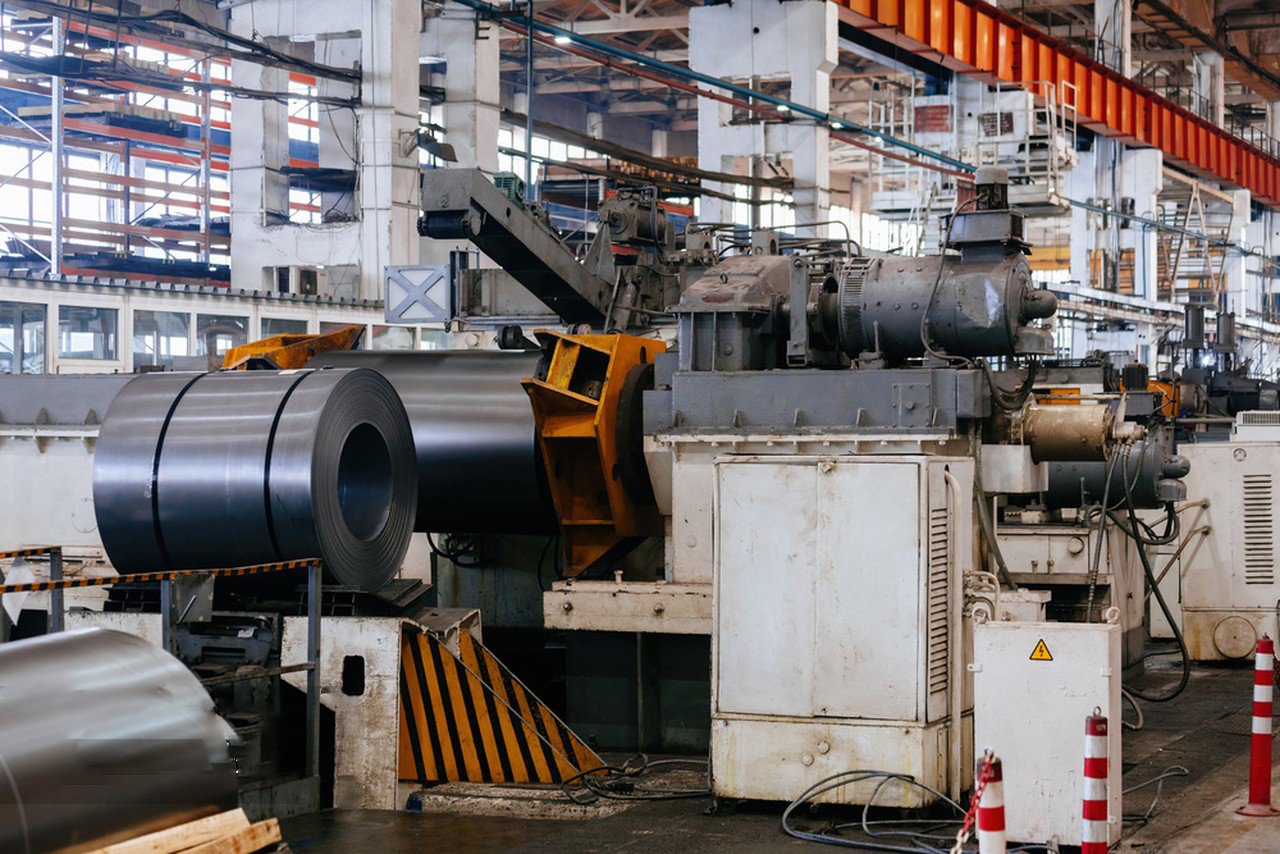
The success of any passivation treatment hinges almost entirely on the cleanliness of the stainless steel surface before it enters the passivation bath. As someone who has worked extensively with clients across various industries – from intricate manufacturing to large-scale engineering projects – I can't stress this enough. At MFY, when we discuss the application of our stainless steel products, whether it's stainless steel coil, sheet, or pipe, we always emphasize that passivation is only as good as the preparation that precedes it. Overlooking this can lead to inconsistent results and, ultimately, compromise the integrity of the final product.
Essential Cleaning Methods and Degreasing
The very first and arguably most crucial step in surface preparation is the removal of organic contaminants. These include oils, greases, cutting fluids, lubricants, coolants, and even fingerprints, all of which are commonly deposited on stainless steel surfaces during fabrication, handling, and storage. These organic films act as a barrier, preventing the passivating solution from making uniform contact with the steel surface. If not thoroughly removed, areas masked by these residues will not be properly passivated, leading to a patchy, ineffective passive layer and potential sites for localized corrosion.
Several methods are employed for degreasing, each with its own set of advantages and applications. Alkaline cleaning is a widely used and effective method. It involves immersing or spraying the parts with hot alkaline solutions (typically containing sodium hydroxide, silicates, phosphates, and detergents) that saponify fatty acids and emulsify other oils and greases, making them water-soluble and easily rinsable. Solvent cleaning, using organic solvents like mineral spirits, vapor degreasers (though many chlorinated solvents are now heavily regulated due to environmental concerns), or newer bio-based solvents, can effectively dissolve oils and greases. However, proper ventilation and solvent recovery/disposal are critical. Ultrasonic cleaning, often used in conjunction with alkaline or specialized cleaning agents, employs high-frequency sound waves to create cavitation bubbles that scrub the surface clean, even in intricate geometries and blind holes. The choice of method depends on the type and amount of soil, the geometry of the parts, and environmental/safety considerations.
I recall a situation with an equipment integrator client who was purchasing MFY’s stainless steel sheets for fabricating custom enclosures. They initially reported inconsistent passivation results, with some units showing early signs of staining. Upon investigation, we discovered their degreasing step was a quick wipe with a solvent-soaked rag, which was insufficient for the level of forming lubricants present. It was smearing rather than removing the contaminants. By helping them implement a more robust alkaline soak cleaning process followed by thorough rinsing, their passivation effectiveness improved dramatically, and the staining issues were resolved. This highlights that even with high-quality MFY stainless steel, downstream processing diligence is key.
Dealing with Heat Tint, Weld Scale, and Oxides
Beyond organic contaminants, stainless steel surfaces, especially after operations like welding or heat treatment, can develop inorganic surface layers such as heat tint, weld scale, and other oxides. Heat tint is a visible, often colored (ranging from straw yellow to dark blue/black) oxide layer that forms on the surface of stainless steel when it's heated to elevated temperatures in the presence of oxygen, typically between 300°C and 850°C (570°F - 1560°F). This layer is thicker and more porous than the desirable passive chromium oxide film and, critically, is often depleted in chromium compared to the base metal, making it less corrosion-resistant. Weld scale is a more substantial, flaky oxide layer that forms directly on and around weld beads.
Removing these oxides is essential before passivation because the passivating solution itself is generally not designed to remove heavy scale. If not removed, the underlying steel remains unprotected or poorly protected. Mechanical methods like grinding, wire brushing (using stainless steel bristles to avoid iron contamination), or abrasive blasting can remove heat tint and scale. However, these methods must be used carefully, as they can embed abrasive particles or smear material, potentially creating new sites for contamination if not followed by thorough cleaning. Chemical methods, primarily pickling, are often more effective and provide a more uniform finish. Pickling involves using strong acid solutions, commonly a mixture of nitric acid and hydrofluoric acid (HF)4, or proprietary pickling pastes and gels. These solutions aggressively dissolve the oxide scale and the chromium-depleted layer beneath it, exposing fresh, uncontaminated stainless steel. While highly effective, pickling with nitric-HF solutions requires stringent safety precautions and waste treatment due to the hazardous nature of the chemicals.
It's important to understand the relationship between pickling and passivation. Pickling is a more aggressive cleaning step designed to remove heavy oxides and the underlying chromium-depleted layer. Passivation is a less aggressive treatment designed to remove free iron and enhance the formation of the passive film on an already clean and scale-free surface. In many cases, especially after welding, a pickling step is necessary before the final passivation step to ensure optimal corrosion resistance. For instance, MFY supplies stainless steel pipes to construction contractors for projects involving extensive on-site welding. We always advise that proper weld cleaning, often involving pickling, followed by passivation, is critical for the long-term integrity of the welded joints, particularly in corrosive environments like those in our Middle Eastern or Southeast Asian export markets.
Rinsing and Drying: The Often-Overlooked Steps
After any cleaning or pickling operation, thorough rinsing is an absolutely critical step that is, unfortunately, often underestimated or improperly executed. The primary purpose of rinsing is to completely remove all residues of the cleaning agents, dissolved soils, pickling acids, and suspended particles from the stainless steel surface. If these residues are not meticulously removed, they can interfere with the subsequent passivation process, cause staining, or even become a source of corrosion themselves. For example, residual alkaline cleaners can neutralize the passivating acid locally, preventing proper film formation. Residual pickling acids can cause over-etching if left on the surface for too long.
The quality of the rinse water is also a significant factor. Ideally, deionized (DI) water or reverse osmosis (RO) water should be used, especially for the final rinse stages. Tap water often contains chlorides, sulfates, calcium, and other dissolved minerals that can leave behind residues or spots on the surface as the water evaporates. These spots can be unsightly and, in the case of chlorides, can even promote pitting corrosion on sensitive stainless steel grades. Multiple rinse stages, often involving a combination of overflow rinsing, spray rinsing, or agitated immersion rinsing, are generally more effective than a single rinse. The principle is to dilute and remove contaminants progressively.
Proper drying after the final rinse and before the parts enter the passivation bath (if there's a delay) or after the final post-passivation rinse is equally important. The goal is to dry the parts quickly and completely, without allowing water to pool and evaporate slowly, which can lead to water spots or staining. Furthermore, the drying method should not re-contaminate the clean surface. Common and effective drying techniques include blowing with clean, dry, oil-free compressed air, using warm air ovens (ensuring the temperature is not high enough to cause sensitization or discoloration), or sometimes even solvent drying for specific applications. Ensuring parts are completely dry prevents dilution of the passivation solution and ensures uniform contact. At MFY, we’ve encountered situations where distributors who stock our stainless steel sheets faced customer complaints about surface imperfections, which were traced back to improper drying after a cleaning process, highlighting this often-overlooked detail.
| Cleaning Method | Target Contaminants | Pros | Cons | Typical Application |
|---|---|---|---|---|
| Alkaline Cleaning | Oils, grease, cutting fluids, shop dirt, some paints | Effective, relatively inexpensive, good for immersion/spray | Can be energy-intensive (heating), waste disposal, thorough rinsing needed | General degreasing, pre-treatment |
| Solvent Cleaning | Oils, grease, waxes, some adhesives | Fast-acting, can be used at room temp, good for spot cleaning | VOC emissions (for some solvents), flammability, health hazards, cost of solvents/disposal | Precision parts, heavy grease |
| Ultrasonic Cleaning | Fine particles, oils, contaminants in complex shapes | Highly effective for intricate parts, crevices, blind holes | Higher equipment cost, solution maintenance | Medical devices, electronics |
| Pickling (Acid) | Heat tint, weld scale, rust, embedded iron | Removes oxides and chromium-depleted layer, activates surface | Hazardous chemicals (HF), strict safety/waste protocols, potential for over-etching | Post-welding, heat treatment |
| Mechanical Cleaning | Loose scale, rust, some surface imperfections | No chemicals (for some methods), can be localized | Can embed particles, alter surface finish, may not remove all contaminants | Pre-cleaning, weld dressing |
Surface preparation is critical for passivationTrue
Proper cleaning removes contaminants that would otherwise prevent uniform passivation and lead to corrosion.
Passivation can remove heavy weld scaleFalse
Passivation is not designed to remove heavy oxides; pickling is required for weld scale removal prior to passivation.
Step 3: Apply the passivation solution following industry standards.
Using an incorrect passivation solution, deviating from recommended concentrations, or ignoring critical parameters like temperature and time can be disastrous. This isn't just about subpar results; it can lead to incomplete passivation, meaning your stainless steel remains vulnerable, or worse, cause surface damage like etching or pitting. Adhering to established industry procedures and standards like ASTM A9675 or AMS 2700 is paramount for achieving effective, consistent, and safe passivation outcomes.
Applying the passivation solution correctly involves the controlled immersion or circulation of stainless steel parts in a chemical bath, typically nitric acid or citric acid-based. The process must adhere to specified concentrations, temperatures, and exposure times as outlined by recognized industry standards to ensure optimal results.
Choosing the right passivation chemistry and meticulously controlling the application process are not arbitrary decisions; they are dictated by a confluence of factors including the specific grade of stainless steel being treated, its prior fabrication history, the intended service environment of the final product, and increasingly, environmental and safety regulations. As Global Business Director at MFY6, I've seen how a detailed understanding of these variables allows our clients—be they large manufacturing enterprises or specialized distributors—to optimize their passivation processes. For instance, the selection between a traditional nitric acid bath and a more modern citric acid-based solution can depend on factors ranging from the need to avoid hexavalent chromium (a byproduct sometimes associated with nitric passivation of certain grades) to the specific corrosion resistance requirements of an application. Furthermore, simply dunking parts into an acid bath is insufficient. The solution must be properly agitated or circulated to ensure fresh acid continually contacts all surfaces, especially for complex geometries or large batches. Monitoring and maintaining the chemical balance and cleanliness of the passivation bath itself is also crucial for consistent results over time, a practice we always recommend to clients using MFY’s stainless steel coils and sheets in their high-volume production lines.

Once the stainless steel surface is impeccably clean and dry, it's ready for the crucial step: the application of the passivation solution. This is where the chemical magic happens, transforming a clean surface into a highly corrosion-resistant one. However, this isn't a one-size-fits-all process. The choice of solution, its concentration, the temperature of the bath, and the immersion time are all critical parameters that must be carefully controlled and aligned with industry best practices and standards. My experience at MFY, dealing with diverse applications of our stainless steel products across global markets, has consistently shown that precision in this step directly correlates with the final quality and performance of the passivated components.
Nitric Acid vs. Citric Acid Passivation: A Comparative Analysis
The two most common types of chemical solutions used for passivating stainless steel are based on nitric acid and citric acid. Each has its own characteristics, advantages, and limitations, and the choice between them often depends on the specific stainless steel grade, application requirements, and environmental or safety considerations.
Nitric acid has been the traditional workhorse for passivation for many decades. It's a strong oxidizing agent capable of effectively dissolving free iron and promoting the formation of a robust chromium-oxide passive layer on a wide range of stainless steel grades, including the common austenitic (e.g., 304, 316 stainless steel)[ ^7] and many ferritic grades. Nitric acid passivation processes are well-documented in standards like ASTM A967 and AMS 2700, which provide various formulations (e.g., nitric acid alone, or nitric acid with sodium dichromate as an accelerator/inhibitor, though the use of dichromates is increasingly restricted due to their hexavalent chromium content). It's known for its effectiveness and relatively low chemical cost. However, nitric acid is a hazardous chemical, requiring careful handling, ventilation, and waste treatment. It can also generate nitrogen oxide (NOx) fumes, which are environmental pollutants. Furthermore, certain nitric acid concentrations and temperatures can be too aggressive for some stainless steel grades, particularly free-machining grades or martensitic grades, potentially leading to etching or intergranular attack if not properly controlled.
Citric acid-based passivation has gained significant popularity in recent years as a more environmentally friendly and safer alternative. Citric acid is an organic acid, biodegradable, and much less hazardous to handle than nitric acid. It effectively chelates (binds to) free iron, removing it from the surface, and also promotes the formation of a high-quality passive film. Citric acid formulations are particularly effective for austenitic stainless steels (like MFY's 300 series coils and sheets) and are often preferred for applications in the food, beverage, pharmaceutical, and medical industries due to their lower toxicity and reduced risk of leaving undesirable residues. Many studies and industry experiences have shown that citric acid passivation can produce a passive layer with corrosion resistance equal to or even superior to that achieved with nitric acid, especially concerning the purity of the chromium oxide layer. While the chemical cost of citric acid itself might be higher than nitric acid, the overall process cost can be competitive when factoring in reduced safety equipment requirements, easier waste disposal, and potentially shorter cycle times for some applications. MFY often advises clients in export markets with stringent environmental regulations, such as parts of Southeast Asia or Europe, to evaluate citric acid passivation as a viable and often preferable option.
The decision between nitric and citric acid isn't always straightforward. For example, some martensitic stainless steels or those with high sulfur content (free-machining grades) might still benefit more from specific nitric acid formulations or require specialized inhibitors if citric acid is used. It's crucial to consult industry standards and, if necessary, conduct trials to determine the optimal passivation chemistry for a given stainless steel grade and application. At MFY, our technical team often assists clients in navigating these choices, considering their specific product (stainless steel pipe, sheet, coil) and its end-use.
Key Parameters: Concentration, Temperature, and Time
Regardless of whether nitric acid or citric acid is chosen, the effectiveness of the passivation process is critically dependent on three key operating parameters: the concentration of the acid solution, the temperature of the bath, and the immersion time of the parts in the solution. These parameters are interconnected and must be carefully controlled within ranges specified by industry standards or validated through empirical testing.
The concentration of the acid in the passivation bath directly influences its ability to dissolve contaminants and promote the growth of the passive layer. For nitric acid, concentrations typically range from 20% to 50% by volume. For citric acid, concentrations are usually lower, often in the range of 4% to 10% by weight. Too low a concentration may result in incomplete passivation or excessively long process times. Conversely, too high a concentration, especially with nitric acid, can lead to etching, pitting, or undesirable surface dulling, particularly on more sensitive stainless steel grades. Regular chemical analysis and replenishment of the bath are necessary to maintain the acid concentration within the optimal working range, as it can deplete over time with use.
Temperature plays a significant role in the kinetics of the chemical reactions involved in passivation. Generally, increasing the temperature accelerates the rate of both iron dissolution and passive film formation. Nitric acid passivation is often performed at temperatures ranging from ambient up to about 60°C (140°F), while citric acid processes can operate at similar or slightly higher temperatures, sometimes up to 70-80°C (160-175°F) to enhance their effectiveness, especially for more resistant grades. However, excessive temperatures must be avoided as they can increase the aggressiveness of the acid, leading to surface damage, or in the case of nitric acid, increase the evolution of NOx fumes. Precise temperature control using thermostats and bath heaters/coolers is essential for consistent results.
Immersion time, or the duration for which the stainless steel parts are exposed to the passivating solution, is the third critical parameter. Typical immersion times range from 20 minutes to several hours, depending on the acid type, concentration, temperature, stainless steel grade, and the level of contamination. For example, ASTM A967 provides tables with recommended time/temperature/concentration combinations for various nitric and citric acid solutions. Insufficient immersion time will result in an incomplete passive layer. Conversely, excessively long immersion times, particularly in aggressive solutions or at elevated temperatures, can be detrimental, potentially leading to over-etching, especially for grades with lower corrosion resistance or those containing elements like sulfur or selenium. It's a delicate balance that must be optimized and consistently applied.
Adhering to Industry Standards (ASTM A967, AMS 2700)
To ensure consistency, quality, and reliability in passivation processes, adherence to established industry standards is crucial. The two most widely recognized standards in North America and often referenced globally are ASTM A967 ("Standard Specification for Chemical Passivation Treatments for Stainless Steel Parts") and AMS 2700 ("Passivation of Corrosion Resistant Steels"). These documents provide comprehensive guidelines on various aspects of passivation.
These standards typically cover: acceptable cleaning methods prior to passivation; different types of passivation solutions (e.g., specific nitric acid formulations, citric acid formulations); recommended ranges for concentration, temperature, and immersion time for various stainless steel families (austenitic, ferritic, martensitic, duplex, precipitation-hardening); and, importantly, methods for testing the effectiveness of the passivation treatment. For example, ASTM A967 lists five different nitric acid treatments (Nitric 1 through Nitric 5) and five citric acid treatments (Citric 1 through Citric 5), each with specified parameters, catering to different needs and stainless steel types. AMS 2700 is often preferred in the aerospace industry and has slightly different classifications and requirements but covers similar ground.
Adherence to these standards is vital for quality assurance and is often a contractual requirement, especially when supplying components to critical industries. For MFY's target clients, such as manufacturing companies producing goods for export or engineering contractors involved in large-scale projects, being able to certify that their stainless steel components have been passivated according to a recognized standard like ASTM A967 provides a significant competitive advantage and assurance of quality to their end-users. It demonstrates a commitment to best practices and helps prevent costly failures or disputes arising from inadequate corrosion protection. For instance, when MFY supplies stainless steel pipes to an engineering contractor for a petrochemical plant in the Middle East, the project specifications will almost invariably call for passivation according to a standard like ASTM A967 to ensure the long-term integrity of the piping system in a corrosive environment. We ensure our clients are aware of these requirements and can implement or specify appropriate passivation for the MFY materials they use.
Consider a client of MFY in India that manufactures stainless steel pressure vessels for the chemical industry. They are required by their customers to provide certification that all wetted parts are passivated according to ASTM A967, specifically using a nitric acid process suitable for 316L stainless steel. By strictly following the parameters laid out in the standard for concentration (e.g., 20-25% nitric acid by volume), temperature (e.g., 49-60°C), and time (e.g., 30 minutes), and then verifying with specified tests, they can confidently meet these requirements. This not only ensures product compliance but also enhances the safety and reliability of their vessels.
| Parameter | Nitric Acid Passivation (Example: ASTM A967 Nitric 1) | Citric Acid Passivation (Example: ASTM A967 Citric 2) |
|---|---|---|
| Typical Grades | Austenitic (300 series), some Ferritic/Martensitic | Austenitic (300 series), Duplex, Precipitation Hardening |
| Concentration | 20-25% HNO₃ by volume | 4-10% Citric Acid by weight |
| Temperature | 49-60°C (120-140°F) | 60-71°C (140-160°F) |
| Time | Minimum 30 minutes | Minimum 20 minutes |
| Rinse | Thorough water rinse, neutralization may be needed | Thorough water rinse |
| Key Advantage | Traditional, well-established, effective for many grades | Environmentally friendlier, safer handling, often excellent results |
| Consideration | NOx fumes, hazardous, potential for etching | May be slower for some grades, bath life monitoring |
Citric acid is safer than nitric acidTrue
Citric acid is biodegradable and less hazardous to handle compared to nitric acid, which produces toxic fumes.
Higher acid concentration always improves passivationFalse
Excessive acid concentration can cause surface damage like etching or pitting, especially with nitric acid.
Step 4: Rinse and neutralize the stainless steel surface.
Allowing residual acid to linger on the stainless steel surface after the passivation bath is a critical error. This oversight can lead to unwanted etching, unsightly staining, or, ironically, initiate new corrosion sites, thereby completely negating the benefits of the carefully performed passivation. Thorough rinsing, and in many cases, a subsequent neutralization step, are absolutely vital to correctly finalize the process and preserve the newly enhanced passive layer.
Following the passivation treatment, stainless steel components must be meticulously rinsed with high-purity water to completely remove all traces of the passivating solution. For certain processes, especially those involving nitric acid, a neutralization step using a mild alkaline solution may be necessary before the final rinse.
This post-passivation rinsing stage is not merely a cursory wash; it's a critical chemical hygiene step designed to halt any further action of the passivating solution and remove any byproducts of the reaction. The integrity of the newly formed passive layer depends on this. At MFY, when we discuss quality control with our clients who process our stainless steel coils or sheets into finished products, we emphasize that the rinsing protocol is as important as the passivation bath chemistry itself. Imagine a scenario where a client in a humid export market like Southeast Asia meticulously passivates stainless steel parts but then performs an inadequate rinse. Residual acid, trapped in crevices or blind holes, can continue to react, especially in the presence of humidity, leading to "flash attack" or visible etching, which is often mistaken for a failure of the passivation itself. Furthermore, if neutralization is required—typically after using more concentrated nitric acid solutions—and it's skipped or done improperly, the acidic residues can cause long-term instability of the passive film. This meticulous attention to post-treatment care is what differentiates a truly robust passivation job from a superficial one.
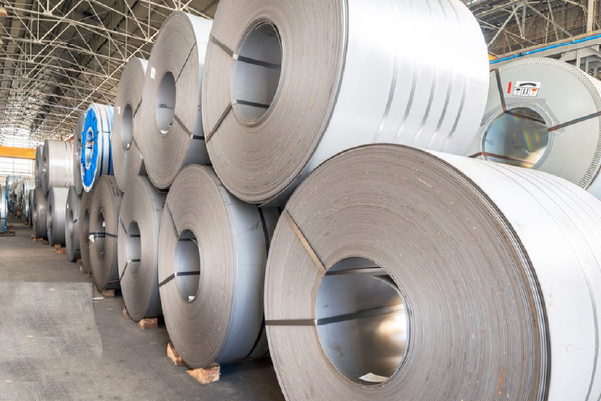
The journey to a perfectly passivated stainless steel surface doesn't end when the parts are removed from the passivation bath. The steps that immediately follow—rinsing and, if necessary, neutralizing—are just as crucial for ensuring the longevity and integrity of the passive layer. As someone who has seen the consequences of neglecting these final procedures in various applications of MFY's stainless steel products, I can attest that cutting corners here can undo all the good work done so far. It’s about ensuring a clean, stable, and truly passive surface.
The Critical Role of Post-Passivation Rinsing
Once the stainless steel parts have spent the requisite time in the passivation solution7 and the enhanced chromium-oxide layer has formed, the immediate next step is thorough rinsing. The primary purpose is to completely remove every trace of the residual passivating acid (be it nitric or citric) and any dissolved metallic salts (like iron nitrates or citrates) from all surfaces, including recesses, threads, and blind holes. If these residues are not completely removed, they can cause significant problems. For example, residual acid, even in minute quantities, can continue to react with the stainless steel, leading to over-etching, surface dulling, or a phenomenon known as "flash attack," where the surface develops a frosty or discolored appearance. In more severe cases, trapped acid can lead to localized corrosion or staining when the part is put into service.
The consequences of inadequate rinsing can be severe and often misleading. A part that appears fine immediately after drying might develop stains or rust spots days or weeks later if acid residues were left behind, especially in humid environments. This is often misinterpreted as a failure of the passivation process itself, when in reality, it's a failure of the post-passivation rinsing. At MFY, we supply stainless steel coils and sheets to numerous manufacturers who then perform their own fabrication and passivation. We always stress that their rinsing protocols must be robust. This typically involves multiple rinse stages. An initial "drag-out" rinse in a static tank can capture the bulk of the concentrated acid (this rinse water may eventually be used to replenish the passivation bath or be treated). This is followed by one or more counterflow rinses or spray rinses with progressively cleaner water to ensure maximum dilution and removal of contaminants.
The quality of the final rinse water is paramount. As with pre-cleaning rinses, using deionized (DI) water, reverse osmosis (RO) water, or at least very clean, low-chloride potable water for the final rinse(s) is highly recommended. Tap water with high levels of chlorides, sulfates, or hardness can leave behind mineral deposits or water spots as the parts dry. Chlorides are particularly detrimental as they are known to break down the passive layer on stainless steel and can initiate pitting corrosion, especially on grades like 304 if concentrations are high. The final rinse should leave the surface "water-break-free," meaning the rinse water sheets off uniformly rather than beading up, which indicates a clean, residue-free surface.
Neutralization: When and How?
Following the primary rinsing stages, a neutralization step8 may be necessary or beneficial, particularly after using nitric acid-based passivation solutions, and especially if those solutions were relatively concentrated or contained additives like sodium dichromate (though the latter is less common now). Citric acid passivation processes, being less aggressive and more easily rinsed, often do not require a separate neutralization step, though it can be used as a precautionary measure. The purpose of neutralization is to ensure that any lingering acidic residues, especially those trapped in tight crevices, pores, or blind holes that might not have been fully flushed out by rinsing alone, are chemically neutralized to a pH where they can no longer attack the stainless steel.
Neutralization is typically performed by immersing the rinsed parts in a dilute alkaline solution. Common neutralizing agents include sodium hydroxide (caustic soda) at low concentrations (e.g., 2-5% by weight), sodium carbonate (soda ash), or sodium bicarbonate (baking soda). The choice of neutralizer and its concentration depends on the type and strength of the acid used for passivation. The immersion time in the neutralizing bath is usually short, often just a few minutes, sufficient to allow the alkaline solution to penetrate and neutralize any trapped acidity. It's important to monitor the pH of the neutralizing bath to ensure it remains effective.
After the neutralization step, it is absolutely essential to rinse the parts thoroughly once again. This post-neutralization rinse is critical to remove all traces of the alkaline neutralizing agent and any salts formed during the neutralization reaction. If these alkaline residues are not completely removed, they too can dry on the surface and cause staining or other undesirable effects. Again, high-purity water is recommended for this final rinse to ensure the cleanest possible surface. For clients of MFY who operate under strict quality control systems, such as those supplying to the aerospace or medical device industries, incorporating a documented neutralization and subsequent thorough rinsing step provides an added layer of assurance for the stability and integrity of the passivated surface.
Drying and Handling Post-Rinse
Once all rinsing (and neutralization, if applicable) is complete, the final step in the immediate post-passivation sequence is thorough and proper drying. The objective is to remove all moisture from the stainless steel surface as quickly as possible to prevent the formation of water spots, staining, or potential recontamination from airborne particles settling on wet surfaces. Slow, uncontrolled air drying, especially in environments with hard water or high humidity, is generally not recommended as it can lead to cosmetic issues or even compromise the passive layer if corrosive elements are present in the drying environment or water.
Acceptable and effective drying methods include blowing with clean, dry, oil-free compressed air, which physically removes water droplets. Care must be taken to ensure the compressed air is indeed clean and free of oil or moisture from the compressor itself. Warm air ovens or tunnels, operating at temperatures that are not detrimental to the stainless steel (e.g., below temperatures that could cause sensitization or discoloration, typically well below 200°C or 400°F for most applications), can also be very effective. For delicate or complex parts, centrifugal dryers can rapidly spin off excess water. Sometimes, solvent drying (using a volatile solvent that displaces water and then evaporates quickly) is used for critical applications, though this adds complexity and cost.
Once dried, the passivated stainless steel parts must be handled and stored correctly to maintain the integrity of their newly enhanced passive layer. Clean gloves should be used to prevent recontamination from fingerprints (which contain oils and chlorides). Storage should be in a clean, dry environment, away from corrosive fumes, shop dirt, or contact with carbon steel or other materials that could cause galvanic corrosion or iron contamination. A distributor client of MFY in the Middle East once encountered issues with superficial rust appearing on passivated stainless steel sheets stored in their warehouse. The investigation revealed that the sheets were stored in an open area with high humidity and occasional condensation, and sometimes placed in direct contact with wooden pallets that had been exposed to moisture and ferrous contamination. By advising them to improve their storage conditions—ensuring a dry, covered area and using inert separators—we helped them preserve the quality of the MFY stainless steel they supplied to their customers.
| Process Stage | Key Action | Water Quality | Typical Agents/Methods | Criticality & Rationale |
|---|---|---|---|---|
| Initial Rinse | Remove bulk passivating solution | Clean potable or recycled | Immersion, spray | Reduces load on subsequent rinses, recovers concentrated solution. |
| Intermediate Rinses | Dilute and remove residual solution | Clean potable / DI water | Multiple counterflow immersion or spray rinses | Ensures thorough removal of acid/dissolved metals. |
| Neutralization (if needed) | Neutralize trapped acidic residues | N/A | Dilute NaOH, Na₂CO₃, NaHCO₃ solution | Eliminates risk of corrosion from trapped acid, especially after nitric acid passivation. |
| Post-Neutralization Rinse | Remove all traces of neutralizing agent/salts | DI or RO water preferred | Thorough immersion or spray | Prevents staining or alkaline residue buildup. |
| Final Rinse | Ensure ultimate surface cleanliness | High-purity DI/RO water | Final immersion or spray, ensure water-break-free surface | Critical for preventing water spots, chloride contamination, ensures purest passive layer. |
| Drying | Remove all moisture quickly and cleanly | N/A | Oil-free compressed air, warm air oven, centrifugal dryer | Prevents water spots, staining, recontamination of the clean, passive surface. |
Rinsing removes passivation acidTrue
Thorough rinsing is essential to completely remove residual passivating acid and prevent continued reaction with the stainless steel surface.
Tap water is ideal for final rinseFalse
High-purity deionized or reverse osmosis water should be used for final rinsing to avoid chloride contamination that can damage the passive layer.
Step 5: Verify the passivation effectiveness through testing.
Simply performing the passivation steps without any form of verification is like navigating without a compass; you might assume you've reached your destination, but you can't be certain. This assumption can lead to unexpected and costly failures when the stainless steel components are put into service, potentially damaging your product's reputation and incurring significant remedial costs. Implementing standardized testing procedures provides objective, quantifiable evidence that the stainless steel is indeed properly passivated and ready for its intended application.
Verifying passivation effectiveness involves conducting specific, standardized tests designed to detect the presence of free iron or other surface contaminants and to confirm the integrity and protective quality of the chromium-oxide passive layer. Common tests include water immersion, high humidity, or copper sulfate tests, as outlined in standards like ASTM A967.
You've meticulously cleaned, passivated, rinsed, and dried your stainless steel components. But how do you truly know if the process was successful? Is the passive layer robust and free of defects? This is where verification testing comes into play. It’s the final quality gatekeeper, providing tangible proof that the surface is indeed passive and will offer the expected level of corrosion resistance. For MFY and our clients, particularly those in demanding sectors like manufacturing or engineering and construction, this step is not just a formality; it's an essential part of a comprehensive quality assurance program. For instance, an engineering contractor using MFY’s stainless steel pipes for a critical infrastructure project in one of our export markets, say Russia, would require documented proof of successful passivation to meet project specifications and ensure long-term reliability. Without testing, you're relying on faith rather than fact, a risky proposition when dealing with material performance. These tests are designed to be sensitive to the conditions that passivation aims to eliminate, primarily the presence of free iron which can act as an initiation site for rust.

After diligently following all the preceding steps, from meticulous cleaning to careful application of the passivation solution and thorough rinsing, the final, crucial phase is to verify that the passivation has indeed been effective. This isn't just about ticking a box; it's about gaining confidence that the stainless steel components will perform as expected in their service environment. My experience at MFY, supplying stainless steel products like coils, sheets, and pipes to a wide array of industries, has taught me that robust verification is a hallmark of a quality-driven operation. It's the step that closes the loop on the passivation process, ensuring that the enhanced corrosion resistance is a reality, not just an assumption.
Common Passivation Verification Tests (as per ASTM A967)
Industry standards, most notably ASTM A9679, outline several common tests that can be used to verify the effectiveness of passivation. These tests are designed to detect the presence of free iron on the surface, which would indicate incomplete passivation or recontamination. The choice of test often depends on the stainless steel grade, the criticality of the application, and customer specifications.
The Water Immersion Test and High Humidity Test are two of the simplest and most widely applicable methods. In the Water Immersion Test, the passivated part is immersed in distilled or deionized water for a specified period (e.g., 24 hours at a controlled temperature). In the High Humidity Test, the part is exposed to a high humidity environment (e.g., 97-100% relative humidity at a controlled temperature, often around 38°C or 100°F) for a similar duration. After the exposure period, the parts are visually inspected for any signs of rust or staining. The absence of rust indicates a pass. These tests are non-destructive and suitable for most stainless steel grades. They simulate conditions that might promote corrosion if free iron were present.
The Copper Sulfate Test is another common method, particularly for austenitic (300 series) and some ferritic (400 series) stainless steels. It involves applying a solution of copper sulfate, sulfuric acid, and water to the passivated surface for a specific time (typically 6 minutes). If free iron is present on the surface, it will react with the copper sulfate, and metallic copper will plate out as a pink or reddish deposit. The absence of any copper plating indicates that the surface is free of iron and the part passes the test. However, this test is not suitable for all grades, particularly martensitic stainless steels or free-machining grades with high sulfur content, as they may give false positives. It's also important to thoroughly rinse the part after the test to remove all copper sulfate solution.
Other tests, though sometimes more specialized or requiring more care, include the Ferroxyl Test. This test uses a solution of potassium ferricyanide, nitric acid, and agar. When applied to a surface containing free iron, the iron reacts to form a blue color (Prussian blue). While very sensitive to free iron, the Ferroxyl test solution is acidic and contains ferricyanide, so it must be thoroughly rinsed off immediately after the test period to prevent etching or staining. It's often used for spot-checking specific areas. For more rigorous performance evaluation, particularly for critical applications or to compare different passivation treatments, the Salt Spray Test (ASTM B117) can be employed. This is an accelerated corrosion test where parts are exposed to a dense salt fog for an extended period (e.g., 24, 48, 96 hours or more). While not strictly a "passivation verification" test in the same way as the others (which primarily check for free iron), it assesses the overall corrosion resistance of the passivated surface.
Interpreting Test Results and Troubleshooting
Correctly interpreting the results of these verification tests is crucial. For most tests (Water Immersion, High Humidity, Copper Sulfate), a "pass" generally means no visual evidence of rust, staining, or copper plating, respectively, after the specified test duration and conditions. Any such evidence typically constitutes a "fail," indicating that the passivation was not fully effective. The specific acceptance criteria are usually defined in the standard (like ASTM A967) or by customer agreement.
When a test failure occurs, it's essential to troubleshoot the process to identify the root cause. Common reasons for test failures include:
- Inadequate Cleaning: Residual oils, greases, scale, or embedded particles were not completely removed before passivation, preventing the solution from reaching the steel surface.
- Incorrect Passivation Parameters: The acid concentration, bath temperature, or immersion time might have been outside the optimal range for the specific stainless steel grade and solution type.
- Contaminated Passivation Bath: The bath itself may have become contaminated with excessive dissolved iron or other impurities over time, reducing its effectiveness.
- Insufficient Rinsing: Residual acid or cleaning agents left on the surface can interfere with passive film stability or cause false positives in some tests.
- Contaminated Rinse Water: Using rinse water with high chloride content or other contaminants can re-contaminate the surface.
- Improper Handling: Recontamination of the passivated surface with iron particles from tools, fixtures, or the environment before testing.
Troubleshooting involves systematically reviewing each step of the cleaning and passivation process. This might include re-verifying cleaning solution concentrations and temperatures, checking the passivation bath chemistry, ensuring rinse water quality, and reviewing handling procedures. Often, the solution involves re-cleaning the failed parts more thoroughly and then re-passivating them, possibly with adjustments to the passivation parameters. For instance, a manufacturing client of MFY who produces precision machined components from our stainless steel bar stock initially experienced sporadic failures in the copper sulfate test. We worked with their quality team to review their process. It turned out that their pre-cleaning degreasing step was occasionally being rushed, leading to residual cutting fluid on some parts. By reinforcing the importance of a consistent and thorough degreasing protocol, they were able to achieve consistent passing results.
Documentation and Quality Control
Comprehensive documentation of the entire passivation process, including all parameters and test results, is a cornerstone of good quality control and is often a requirement for traceability, especially in regulated industries. This documentation provides a record that the process was performed according to specified procedures and that the parts met the required quality standards.
The documentation should typically include:
- Identification of the parts being passivated (e.g., lot number, material grade).
- Details of the pre-cleaning process (methods, chemicals used, temperatures, times).
- Details of the passivation process (type of acid, concentration, temperature, immersion time).
- Records of bath maintenance (e.g., chemical analysis, additions).
- Details of rinsing and neutralization steps.
- The specific verification tests performed (e.g., ASTM A967 – Copper Sulfate Test).
- The results of these tests (pass/fail, any observations).
- Date of passivation and testing, and the operator responsible.
This level of documentation is invaluable for MFY's B2B clients, particularly engineering contractors involved in large infrastructure projects or manufacturing companies supplying components to OEMs. It provides auditable proof of quality and compliance. In case of any future issues or queries, these records can be used to demonstrate due diligence and trace the processing history of the components. MFY's commitment to quality extends to advising our clients on best practices for such documentation, ensuring that the high-quality stainless steel coils, sheets, and pipes we supply can be transformed into final products whose integrity is verifiable and assured. Ultimately, consistent passivation verification and documentation contribute significantly to overall product quality, reduce the risk of field failures, and enhance customer satisfaction and confidence.
| Test Name | Principle | Typical Application (ASTM A967) | Common Pass/Fail Criteria |
|---|---|---|---|
| Water Immersion Test | Expose to DI water, check for rust. | All grades. | No rust or staining after 24 hrs immersion. |
| High Humidity Test | Expose to high humidity, check for rust. | All grades. | No rust or staining after 24 hrs exposure. |
| Copper Sulfate Test | Apply copper sulfate solution, check for copper plating (indicates free iron). | Austenitic (200, 300 series), some Ferritic (400 series). Not for Martensitic or high-sulfur grades. | No copper plating (pink/red color) after 6 min exposure. |
| Ferroxyl Test | Apply ferricyanide solution, check for blue color (indicates free iron). | Spot testing for free iron, use with caution (acidic). | No blue coloration. |
| Salt Spray (Fog) Test (ASTM B117) | Expose to salt fog, assess general corrosion resistance. | More of a performance test, used for critical applications. | Varies by specification; e.g., no rust after X hours. |
| Potassium Permanganate Stain Test | (Not in ASTM A967 directly for verification but related) Detects manganese sulfides | Primarily for free-machining grades to assess surface sulfide removal. | Absence of pink/brown stain. |
Passivation requires verification testingTrue
The article clearly states that verification testing is essential to confirm the effectiveness of passivation and ensure corrosion resistance.
Copper sulfate test works for all gradesFalse
The text specifies that copper sulfate test is not suitable for martensitic stainless steels or free-machining grades with high sulfur content.
Conclusion
Ultimately, achieving superior corrosion resistance and longevity for your stainless steel products hinges on a meticulously executed passivation process. From thorough surface preparation to controlled chemical application, diligent rinsing, and robust verification testing, each step, guided by industry standards, is absolutely crucial for success.
-
Discover the financial impact of corrosion on industries and the role of passivation ↩
-
Understand the exact parameters needed for effective passivation in stainless steel ↩
-
Find out why hygienically treated surfaces are crucial for safety and compliance ↩
-
Understand how these acids work to clean stainless steel surfaces ↩
-
Understand specific guidelines and procedures for passivating stainless steel. ↩
-
Learn about the specific use cases and advantages of using 316 stainless steel. ↩
-
Learn how a passive layer enhances the corrosion resistance of stainless steel ↩
-
Understand how neutralization helps in preventing corrosion post-passivation ↩
-
Understand the ASTM A967 guidelines for passivation and testing of stainless steels ↩
Have Questions or Need More Information?
Get in touch with us for personalized assistance and expert advice.
